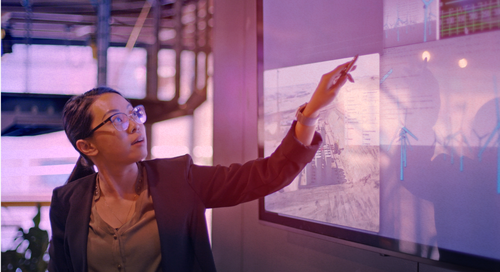Introduction
Artificial intelligence is no longer just a headline—it’s a quiet force moving behind the scenes, shaping the way work is done. In the context of HR, AI isn’t replacing humans. It’s amplifying them. It’s removing the weight of repetitive work, offering deeper clarity where ambiguity once lived, and enabling people teams to spend less time gathering data and more time acting on it.
Still, there’s a gap between hype and reality. Too many conversations about AI in HR fall into extremes—either wild speculation about total automation or skepticism that anything will really change. The truth sits in the middle. AI isn’t taking over, but it is reshaping what’s possible. And for organizations that are willing to adopt it with purpose, the transformation can be significant.
At Byrivop, the approach to AI in HR has always been grounded—not in chasing trends, but in solving real problems. The goal isn’t to be futuristic; it’s to be effective. Because when AI is applied thoughtfully, it enhances—not replaces—the deeply human work at the heart of HR.
The Subtle Shift: What AI Is Actually Doing in HR Today
Forget the idea of robots interviewing candidates or algorithms making final hiring decisions. That’s not where AI’s real power lies. Instead, think of AI as a lens—one that helps HR teams see patterns, predict needs, and prioritize action. Whether it’s identifying potential skill gaps before they emerge or mapping the right learning resources to the right employee at the right time, AI is helping HR teams become more intelligent and responsive.
In workforce planning, AI can digest vast, fragmented data sets—about roles, tasks, skills, and business demand—and bring them into sharper focus. Instead of reactive headcount forecasting, HR can engage in proactive capability planning. Instead of only responding to turnover, AI can help spot early signals and suggest where interventions could matter most.
When applied to talent acquisition, AI doesn’t need to replace judgment—it just filters noise. It helps recruiters focus their attention on the candidates most aligned with specific job demands, based on real task-level analysis rather than generic job titles. This increases both speed and accuracy without undermining fairness or human oversight.
AI and the Human Layer: Collaboration, Not Competition
The real value of AI in HR comes when it works in partnership with people. AI can flag risks, offer recommendations, and reveal hidden strengths—but it can’t fully understand the nuance of motivation, culture, or leadership. That’s the human domain. The two must work together.
AI brings scale to insight. A human might notice a trend across five exit interviews. AI can detect that same pattern across five hundred. A leader might know which team member is feeling disengaged. AI can surface early indicators of disengagement across the entire organization, allowing HR to respond earlier and with greater precision.
What this creates is not a colder system—it’s a smarter, more empathetic one. When HR professionals are no longer buried in spreadsheets or stuck chasing incomplete data, they can return to what drew them to the work in the first place: people. AI gives them time, clarity, and confidence. The rest is still, and always will be, human.
Capability Overload: How AI Helps Focus, Not Distract
In 2025, organizations are flooded with data. Performance reviews, training completions, project outputs, engagement surveys—it’s all there, but it’s too much to make sense of manually. AI offers structure. It can connect disparate data sources and offer a clearer view of capability—across individuals, teams, and the whole enterprise.
This is especially powerful when it comes to task-based understanding. Rather than looking at skills in abstract terms, AI can analyze the actual work being done, map the capabilities required, and help organizations see where they’re strong—and where they need to grow. That insight is impossible to get at scale without intelligent systems.
Byrivop, for example, uses AI not to judge people, but to support them. When AI highlights an area for development, it’s not a flaw—it’s a clue. A clue that someone is ready to grow, ready for a new challenge, or ready to lead. These moments, when surfaced in time, can transform careers and strengthen culture.
From Data to Dialogue: AI’s Role in Building Trust
There’s a common fear that AI will make HR more transactional, less human. But in practice, the opposite can happen—if it’s handled with care. When AI removes ambiguity, employees feel more seen. When recommendations are based on evidence rather than guesswork, trust grows. When AI highlights opportunities tailored to a person’s unique path, development feels more personal, not less.
The challenge is not the presence of AI—it’s how it’s communicated and embedded. Transparency matters. Ethics matter. People need to know how decisions are being made and where AI is involved. That clarity builds trust, and that trust becomes the foundation for using AI in ways that elevate—not alienate—the workforce.
Conclusion
AI in HR isn’t about control. It’s about capability. It’s about giving HR teams the tools to understand work more clearly, respond more quickly, and lead with more confidence. It’s about replacing clutter with clarity—and making room for deeper, more strategic conversations across the organization.
The future of HR isn’t artificial. It’s augmented. It’s people, empowered by systems that help them see more, think deeper, and act sooner. Organizations that embrace this balanced approach—where AI sharpens human ability rather than replacing it—will lead not just with efficiency, but with insight.
At Byrivop, we’ve seen that when AI is used with purpose, it doesn’t distance us from people. It brings us closer to what they need, who they are, and what they’re capable of becoming.

